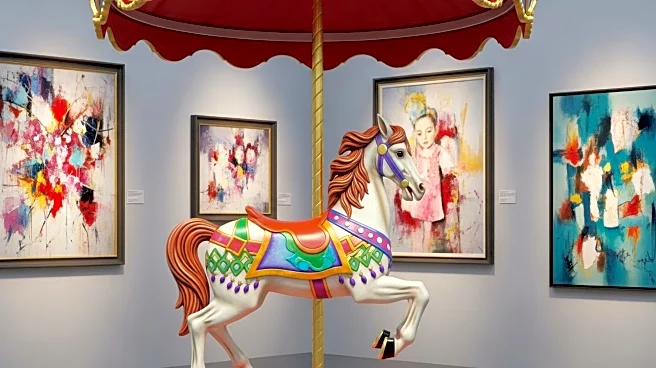What's Happening?
Robert Grosvenor, a renowned sculptor known for his innovative and gravity-defying artworks, passed away on September 3 at his home in East Patchogue, New York. He was 88 years old. Grosvenor's work often involved transforming everyday objects, such as boats and vintage cars, into enigmatic sculptures that challenged conventional perceptions of gravity and form. His artistic journey began in the early 1960s when he was part of a group of avant-garde artists who established a gallery co-op called Park Place in Manhattan. This group, which included notable artists like Mark di Suvero and Dean Fleming, was known for creating art that diverged from mainstream trends. Grosvenor's first major piece, exhibited in 1965, was a large structure made of plywood and Masonite, inspired by a solar telescope he had seen in Arizona. His work continued to captivate audiences with its unique blend of familiar and fantastical elements.
Why It's Important?
Robert Grosvenor's contributions to the art world are significant due to his ability to push the boundaries of traditional sculpture. His work not only challenged the norms of art but also inspired a generation of artists to explore new forms and materials. Grosvenor's sculptures, which often incorporated elements of architecture and engineering, have been influential in the development of contemporary art. His passing marks the end of an era for the avant-garde movement he helped pioneer. The art community, particularly those involved in sculpture and installation art, stands to feel the impact of his loss. Grosvenor's legacy will continue to influence artists who seek to explore the intersection of art and science, encouraging them to think beyond conventional limits.
What's Next?
The art world is likely to see a renewed interest in Robert Grosvenor's work as galleries and museums may organize retrospectives to honor his legacy. Art historians and critics might revisit his contributions to the avant-garde movement, potentially leading to new interpretations and discussions about his influence on contemporary art. Collectors and institutions may also seek to acquire his works, recognizing their historical and artistic value. Additionally, younger artists inspired by Grosvenor's approach may continue to explore and expand upon his ideas, ensuring that his innovative spirit lives on in future generations.
Beyond the Headlines
Robert Grosvenor's work often blurred the lines between art and engineering, prompting discussions about the role of technology in artistic expression. His sculptures, which frequently incorporated industrial materials and techniques, highlighted the potential for art to engage with scientific and technological advancements. This intersection of disciplines may encourage future artists to explore similar themes, fostering a dialogue between art and other fields. Grosvenor's legacy also raises questions about the sustainability of art practices, as his use of everyday objects challenges artists to consider the environmental impact of their materials and methods.













